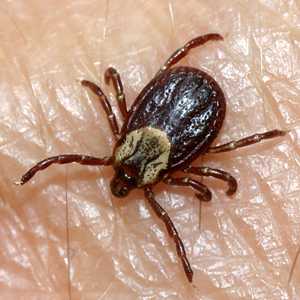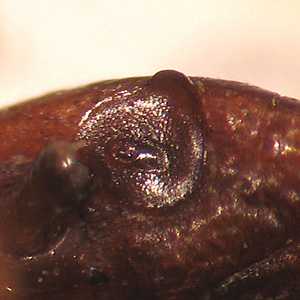
Case #268 - February, 2010

Figure A

Figure B

Figure C
Case Answer
The tick depicted in this case was identified as Dermacentor variabilis, commonly known as the American dog tick. Diagnostic morphologic features included:
- an ornate dorsal shield (DS, Figure A).
- the presence of festoons (FS, Figure A).
- mouthparts (MP, Figure B) short, in relation to the basis capituli (BC, Figure B).
- slight prolongation of the spiracular plate (arrow, Figure C).

Figure A

Figure B

Figure C
In addition to identification, we asked about the public health importance of this genus in North America. Members of the genus Dermacentor are the primary vectors of Rickettsia rickettsii, the causative agent of Rocky Mountain spotted fever (RMSF). Dermacentor spp. can also transmit Colorado tick fever virus, Francisella tularensis (tularemia), and have been implicated in tick paralysis.
More on: Ticks
Images presented in the monthly case studies are from specimens submitted for diagnosis or archiving. On rare occasions, clinical histories given may be partly fictitious.
DPDx is an education resource designed for health professionals and laboratory scientists. For an overview including prevention and control visit www.cdc.gov/parasites/.
- Page last reviewed: August 24, 2016
- Page last updated: August 24, 2016
- Content source:
- Global Health – Division of Parasitic Diseases and Malaria
- Notice: Linking to a non-federal site does not constitute an endorsement by HHS, CDC or any of its employees of the sponsors or the information and products presented on the site.
- Maintained By:


 ShareCompartir
ShareCompartir